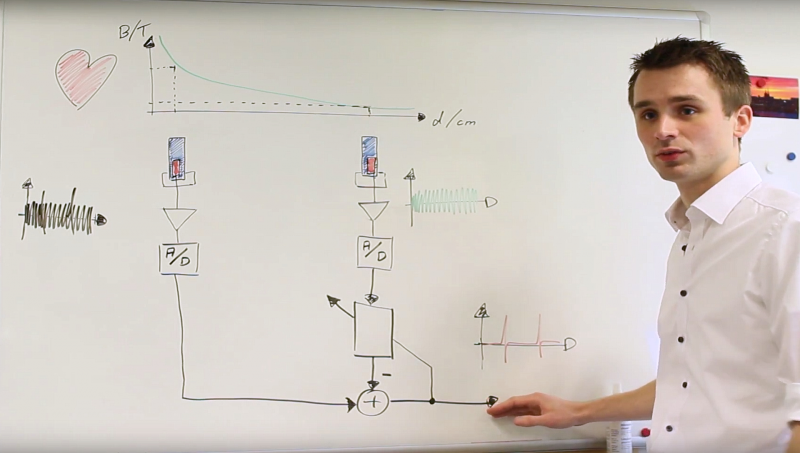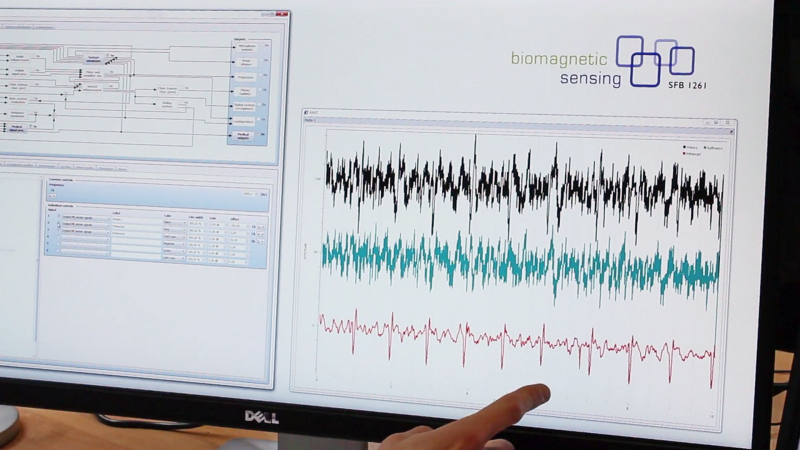Processing of Sensor Signals
In order to improve the measured signal, inter alia, the method of subtracting the interfering signals is used. For this purpose, a second sensor is positioned such that it no longer receives the medically relevant signal, but only the (interfering) signals from the environment. Now, after appropriate adjustment, the interference signal can be subtracted from the measuring signal on the computer. It remains a signal that is of interest to the physician.
To measure signals in the three-dimensional space, for example when analyzing brain activities, represents a particular challenge. To reconstruct the origin of the signal, various sensors are installed around the medically relevant area. The measured signals differ depending on the position of the sensor. From these deviations the signal source can be localized building on a good knowledge of the environmental influences.



